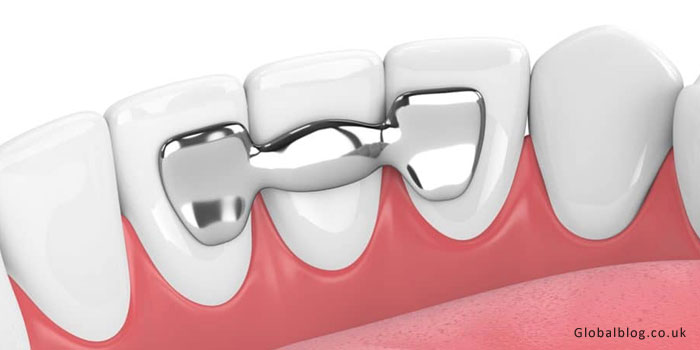When it comes to restoring your smile, dental options can feel overwhelming. Among the various treatments available, a cantilever bridge dental stands out as an innovative solution for those missing teeth. But what exactly is a cantilever bridge? How does it impact your oral health? As we explore this unique dental procedure, you’ll discover its advantages and disadvantages, along with how it contributes to overall well-being. Whether you’re considering this option or simply curious about enhancing your oral health, understanding cantilever bridges could be the key to unlocking a beautiful smile that lasts a lifetime. Let’s dive in!
What is a Cantilever Bridge Dental?
A cantilever bridge dental is a specialized dental prosthetic designed to replace missing teeth. It consists of one or more artificial teeth anchored on just one side, attached to an existing tooth or implant.
This design allows for effective support while minimizing the need for extensive alteration of surrounding teeth. Because it relies on adjacent healthy structures, a cantilever bridge can be less invasive than other options.
Typically crafted from durable materials like porcelain or metal, these bridges are tailored to match the natural color and shape of your original teeth. This guarantee that they merge seamlessly into your smile.
Cantilever bridges are particularly useful in cases where there is only one healthy tooth available for anchoring. Patients often appreciate the quick installation process and immediate improvement in functionality and aesthetics.
Pros and Cons of Using a Cantilever Bridge Dental
Cantilever bridges in dentistry offer several advantages. They require less alteration of adjacent teeth compared to traditional bridges. This preservation can be beneficial for long-term oral health.
A cantilever bridge is also a viable option when there are no adjacent teeth on one side, providing flexibility in treatment plans. Additionally, they often take less time to install, making the procedure quicker and more convenient.
However, there are potential downsides to consider. The design may place additional stress on the supporting tooth or implant, possibly leading to future complications.
Furthermore, if not properly maintained or fitted, these bridges can lead to discomfort or instability over time. Patients should weigh both sides carefully before deciding on this dental solution.
The Importance of Oral Health
Oral health is a very important component of in general well-being. It goes beyond just having a bright smile or fresh breath. Good oral hygiene contributes significantly to physical health, affecting everything from digestion to heart function.
When you neglect your teeth and gums, it can lead to serious complications. Gum disease has been linked to various conditions like diabetes and cardiovascular issues. Maintaining healthy teeth reduces these risks.
Moreover, poor oral health can impact mental wellness too. Many people feel self-conscious about their dental appearance, leading to lower self-esteem and social anxiety.
Regular check-ups, brushing twice daily, and proper flossing are fundamental practices for maintaining optimal oral health. These small habits create significant long-term benefits for both the mouth and body as a whole.

How Cantilever Bridge Dental Can Improve Oral Health
Cantilever bridge dental solutions can significantly enhance oral health, particularly for those missing a tooth. By filling gaps effectively, they restore functionality to your bite. This means you can enjoy a diverse diet without worrying about discomfort or difficulty chewing.
Moreover, cantilever bridges help maintain the alignment of adjacent teeth. When there’s an empty space, neighboring teeth may shift and lead to misalignment over time. A properly fitted cantilever bridge prevents this issue and promotes better overall dental structure.
Additionally, these bridges support proper speech patterns that might be affected by missing teeth. Clearer articulation improves communication and boosts self-confidence in social situations.
Maintaining good oral hygiene becomes easier with a cantilever bridge in place. It simplifies brushing and flossing routines since fewer spaces mean less potential for plaque accumulation or gum disease development.
Risks and Precautions with Cantilever Bridge Dental
While cantilever bridge dental work offers significant benefits, it’s essential to be aware of potential risks. One primary concern is the pressure placed on adjacent teeth. Because a cantilever bridge relies on just one tooth for support, it can lead to strain and possible damage over time.
Another risk involves the materials used in bridges. Some individuals may experience allergic reactions or sensitivity to certain metals and resins. It’s crucial to discuss any known allergies with your dentist beforehand.
Hygiene plays a vital role in maintaining your oral health after getting a cantilever bridge. Improper cleaning can result in plaque buildup around the supporting tooth, which can cause gum disease or decay.
Regular check-ups become even more critical post-procedure. Monitoring ensures that any issues are caught early before they escalate into serious problems affecting overall oral health.
Alternative Options for Improving Oral Health
When it comes to enhancing oral health, several alternatives can complement or replace cantilever bridges. Dental embeds stand out as a accepted choice. They provide stability and mimic the function of natural teeth.
Another option is traditional dental bridges, which involve anchoring prosthetic teeth on adjacent healthy ones. This method is effective but requires altering surrounding teeth.
For those looking for less invasive solutions, removable dentures might be ideal. They are easy to maintain and offer flexibility for patients with multiple missing teeth.
Maintaining good oral hygiene is crucial no matter what option you choose. Regular brushing, flossing, and routine dental check-ups can help protect your investment in dental work.
Natural remedies also play a role in oral health improvement. Ingredients like coconut oil or baking soda can support gum health when used responsibly as part of an overall care regimen.
Conclusion: Cantilever Bridge Dental
Cantilever Bridge Dental offers a unique solution for those needing dental restoration. This type of bridge can replace missing teeth while minimizing the need for extensive modifications to surrounding teeth. Its design allows it to function effectively, providing both aesthetic and functional benefits.
Investing time in understanding how Cantilever Bridge Dental impacts your oral health could lead you toward making informed decisions about your dental care journey.
